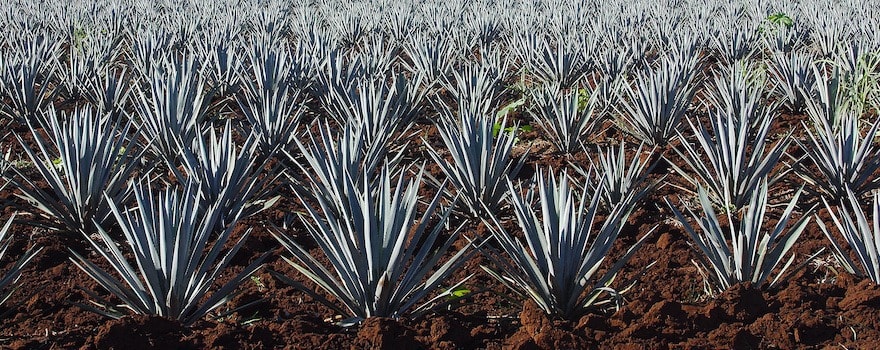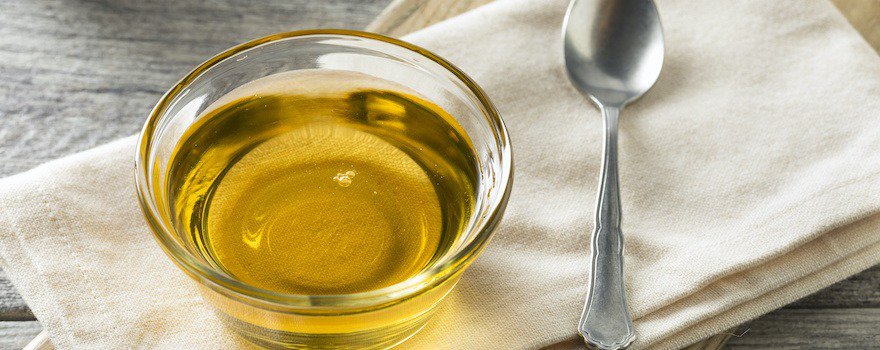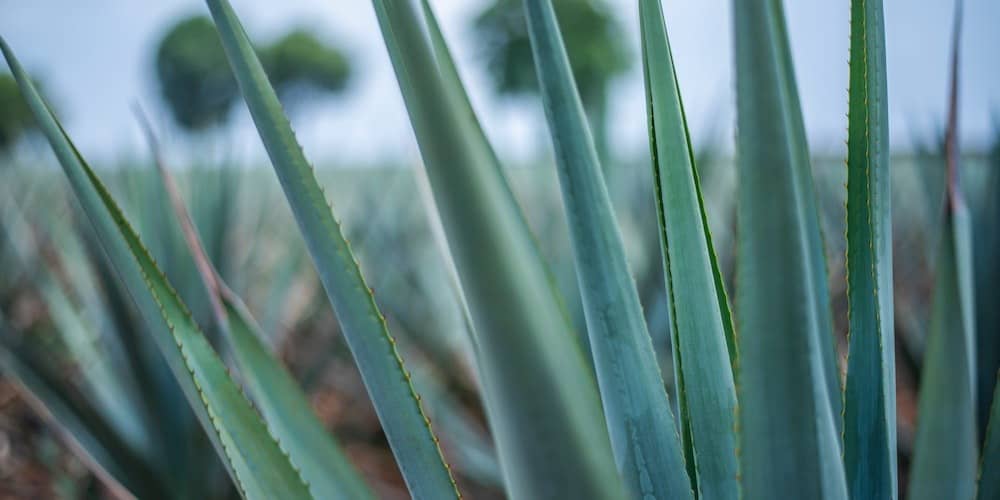BENEFITS OF AGAVE
✓ Fights bacteria
✓ Anti-inflammatory
✓ Helps with weight loss
✓ Supports gut microbiome
✓ Aids in blood sugar control
What is agave?
Agave is a succulent plant belonging to the Asparagaceae family. The genus includes many species, the most well-known being the American agave (Agave americana), swan’s neck (Agave attenuata), and blue (Agave tequilana). All are native to the warm and dry regions of Central or South America: Mexico, Argentina, Chile… Some species also grow around the Mediterranean such as in Corsica.
In Mexico, agave juice is mainly used for the production of alcoholic beverages like tequila and pulque, a traditional drink of indigenous civilizations. The plant is deeply rooted in the country’s history and culture and still contributes to the economy today.
Elsewhere, agave is mainly known and consumed in the form of syrup, extracted from the heart of the plant. Similar to honey, the syrup is appreciated for its sweet taste and high sweetening power.
That is why it serves as a natural alternative to sugar like maple syrup, stevia, or lucuma.
But the interest in agave doesn’t stop there as it also has medicinal properties. Thus, it is antibacterial and anti-inflammatory, helps with weight loss, and supports the gut microbiome. The plant is also interesting for blood sugar control.
In recent years, it has been the subject of much research due to its great versatility. Its uses are numerous and extend from food to biofuels and even textile fibers.
Producers are also looking to reuse harvest residues (biomass). Indeed, during production, only the bulbs are exploited while the leaves and bagasse (fibrous residue) are discarded. These could be turned into useful products for food, animal forage, agriculture, or textiles.
Nutritional composition
- Amino acids
- Vitamins : pro-vitamin A, B1, B2, B3, B5, B6, B11, C, E, K
- Minerals and trace elements: iron, calcium, phosphorus, magnesium, potassium, sodium, zinc
- Carbohydrates
- Proteins
- Fiber
- Sugars : sucrose, glucose, fructose
- Water

The benefits of agave
🦠 Fights bacteria
Agave fights against certain harmful bacteria in the body. This action is thought to be due to the fructans it contains. These are complex chains of fructose also found in some grasses like wheat, oats, and spelt.
These fructans have shown a powerful antibacterial action against Salmonella by reducing their growth. They also inhibit the development of pathogenic bacteria Escherichia coli, Listeria, and Shigella.
This study from the University of Guanajuato (Mexico), conducted directly in the lab, shows the antibacterial activity of agave fructans.
🔥 Anti-inflammatory
Agave contains various compounds such as saponins, palmitoyl, and glucopyranosyl sitosterol. Behind these names are natural substances capable of reducing inflammation.
These compounds lower the levels of interleukins 1 and 6 involved in the body’s inflammatory response. Meanwhile, they block the action of tumor necrosis factor (TNF) and increase levels of interleukins 4 and 10 responsible for reducing inflammation.
This study from the Mexican Social Security Institute (Mexico), conducted on mice, shows the anti-inflammatory effect of agave.
🏃🏻♂️ Helps with weight loss
Various studies have shown that agave consumption can help with weight loss. Among the different fructans it contains, there is inulin, a type of soluble fiber that increases satiety, promotes the reduction of BMI, and decreases body fat.
Inulin thus helps to regulate appetite as part of a diet and to limit snacking throughout the day. In cooking, it can replace some sugar and fats for lighter meals.
This study from the Center for Research and Assistance in Technology and Design of the State of Jalisco (Mexico), conducted on obese patients, shows how agave helps with weight loss.
♻️ Supports intestinal microbiota
Agave fructans have a beneficial effect on the intestinal microbiota. Inulin, for example, has a prebiotic effect, meaning it nourishes the microbiota and promotes the development of good bacteria. It specifically stimulates the growth of bifidobacteria and lactobacilli.
Like chia seeds or carob, this plant can improve intestinal health and prevent the development of diseases such as colitis and colon cancer.
This study from the National Autonomous University of Mexico, conducted on rodents, shows the prebiotic effect of agave inulin.
🍭 Helps control blood sugar
Agave syrup is notable for its low glycemic index, which is only 15. It thus limits blood sugar spikes after meals. It is an interesting alternative for diabetic individuals to better control their blood sugar levels and reduce their consumption of refined sugar.
This study from San Diego State University (USA), conducted on mice, shows how agave syrup helps control blood sugar levels.

Agave syrup
Agave syrup is also called agave nectar or aguamiel. It is extracted from the “piña,” the bulb resembling a pineapple located at the heart of the plant, capable of weighing up to 50 kilograms! Once the juice is filtered and heated, it becomes a beautifully amber-colored liquid with a consistency more liquid than honey.
Composed of fructose, it has a good sweetening power. Thus, 75g of agave syrup could replace 100g of sugar. It can be used in all cooking recipes and drinks: cakes, biscuits, yogurts, cottage cheese, smoothies, tagines… Its taste is rather mild and neutral. It is also a vegan alternative to honey.
Check the labels: the product should contain 100% agave syrup.

Consume sustainably: favor organic and fair trade agave
The plant is mainly cultivated in Mexico, particularly in the state of Jalisco, near the Pacific Ocean. A large part of the production is used to make tequila, the famous Mexican beverage. The other part is destined for the manufacture of agave syrup which is then exported worldwide.
Unfortunately, industrial syrups often contain added sugar and additives. If possible, choose certified organic and unrefined syrup.
Also check the manufacturing process used. In fact, syrup is often heated to very high temperatures, thus losing all its nutrients. Opt for fair trade syrup as it is made by local producers and traditionally.

Dosage
It’s important to remember that even if agave syrup is “better” than white sugar, it is still sugar and should be consumed in moderation. The recommended dosage is less than 30g per day (about one large tablespoon).
Contraindications and side effects
Consuming agave has some contraindications:
- Due to its high sugar content, overweight individuals should consume it in moderation;
- Diabetic individuals should seek advice from their doctor before consuming it.
Excessive consumption presents some side effects:
- Digestive disorders
- Abdominal pain
- Diarrhea
- Allergic reaction
If you experience side effects, stop consumption and consult a medical professional.
Sources and scientific studies
Naivy Y Nava-Cruz, Miguel A Medina-Morales, José L Martinez, R Rodriguez, Cristóbal N Aguilar, 2014. Agave biotechnology: an overview.
Erika Alejandra Martínez-Ortega, José Sergio López-Briones, Gabriela Rodríguez-Hernández, Ricardo Ernesto Ramírez-Orozco, Elena Franco-Robles, 2020. Antibacterial activity of agave fructans against salmonella typhimurium.
Elizabeth Hernández-Valle, Maribel Herrera-Ruiz, Gabriela Rosas Salgado, Alejandro Zamilpa, Martha Lucia Arenas Ocampo, Antonio Jiménez Aparicio, Jaime Tortoriello, Enrique Jiménez-Ferrer, 2014. Anti-inflammatory effect of 3-O-[(6′-O-palmitoyl)-β-D-glucopyranosyl sitosterol] from Agave angustifolia on ear edema in mice.
Eduardo Padilla-Camberos, Carla P Barragán-Álvarez, Nestor E Diaz-Martinez, Vineet Rathod, José Miguel Flores-Fernández, 2018. Effects of Agave fructans on Body Fat and Serum Lipids in Obesity.
Marisol Rivera-Huerta, Vania Lorena Lizárraga-Grimes, Ibrahim Guillermo Castro-Torres, Mabel Tinoco-Méndez, Lucía Macías-Rosales, Francisco Sánchez-Bartéz, Graciela Guadalupe Tapia-Pérez, Laura Romero-Romero, María Isabel Gracia-Mora, 2017. Functional Effects of Prebiotic Fructans in Colon Cancer and Calcium Metabolism in Animal Models.
Shirin Hooshmand, Brittany Holloway, Tricia Nemoseck, Sarah Cole, Yumi Petrisko, Mee Young Hong, Mark Kern, 2014. Effects of agave nectar versus sucrose on weight gain, adiposity, blood glucose, insulin, and lipid responses in mice.



